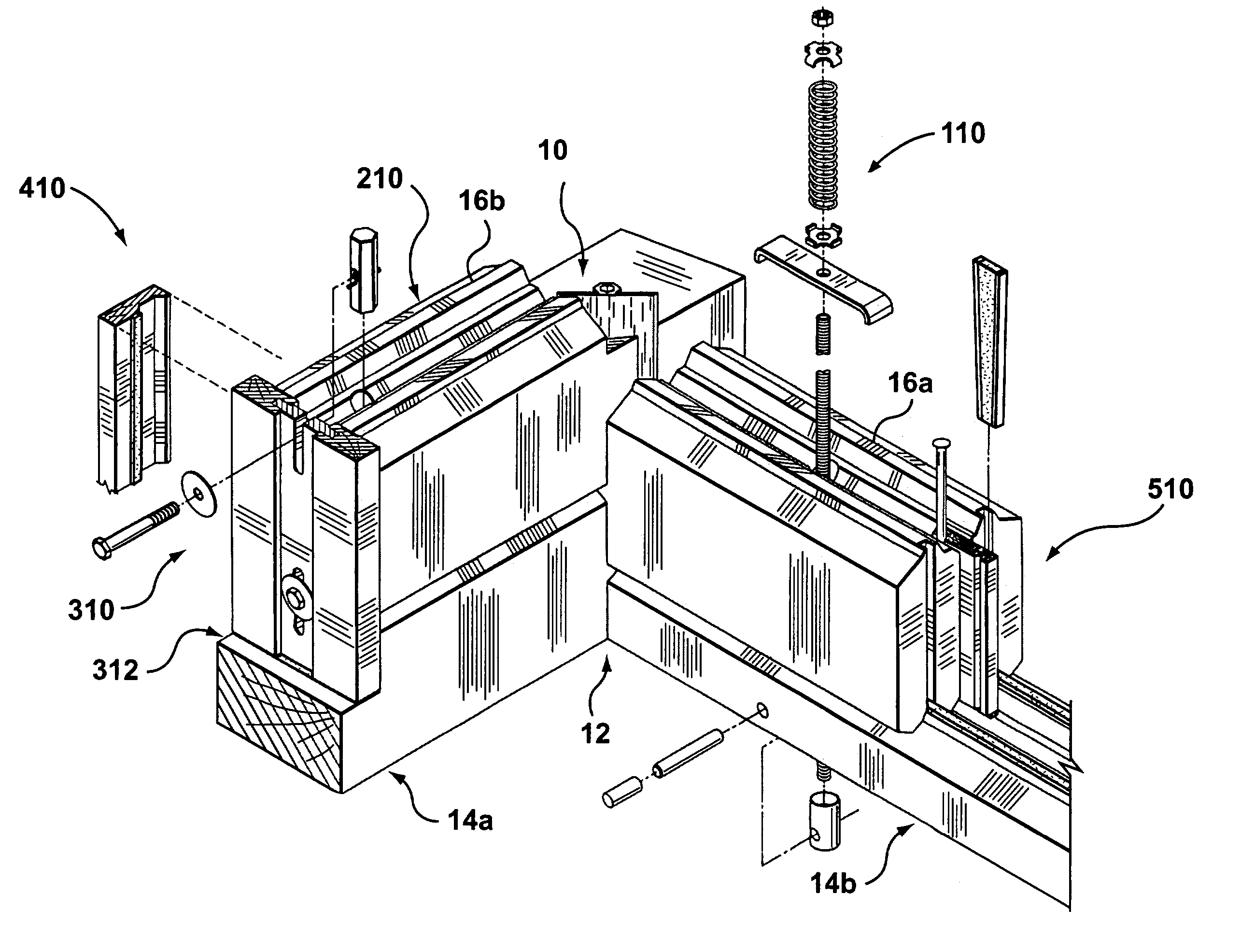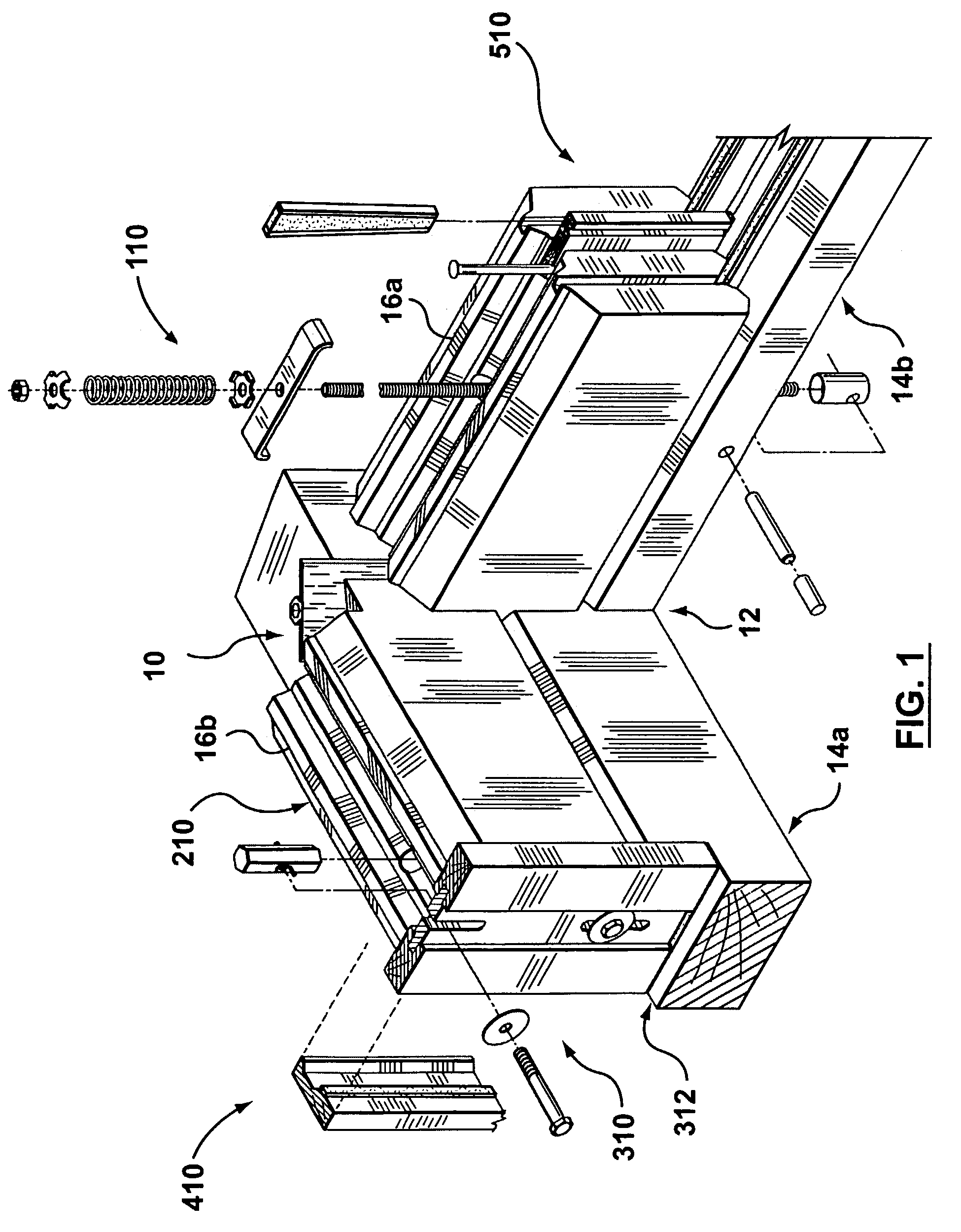System for constructing log structures
a construction system and log structure technology, applied in the direction of dovetail-like connections, structural elements, rod connections, etc., can solve the problems of difficult to provide the corner connection of logs at an intersecting corner, limited lifespan of caulking, and difficulty in constructing such log structures
- Summary
- Abstract
- Description
- Claims
- Application Information
AI Technical Summary
Benefits of technology
Problems solved by technology
Method used
Image
Examples
Embodiment Construction
[0097]A corner connection structure according to the present invention is shown generally at 10 in FIG. 1. The corner connection structure 10 is provided at a corner 12 where walls 14a and 14b intersect. The walls 14a and 14b form part of a building such as, for example, but not limited to, a home or cabin.
[0098]Referring to FIG. 2, the walls 14a and 14b are constructed of generally horizontally extending logs 16a and 16b, respectively. The walls 14a and 14b are nonparallel, intersecting each other at the corner 12. In the embodiment illustrated, the walls 14a and 14b intersect at approximately 90°. However, the angle of intersection at corner 12 could be any angle, and it is to be appreciated that the corner connection structure 10 could be used on walls having any angle of intersection, and also on walls meeting at a T-intersection.
[0099]The logs 16a and 16b of the walls 14a and 14b have ends 17a and 17b which are proximate the corner 12. Adjacent the ends17a and 17b, the logs 16a...
PUM
 Login to View More
Login to View More Abstract
Description
Claims
Application Information
 Login to View More
Login to View More - R&D
- Intellectual Property
- Life Sciences
- Materials
- Tech Scout
- Unparalleled Data Quality
- Higher Quality Content
- 60% Fewer Hallucinations
Browse by: Latest US Patents, China's latest patents, Technical Efficacy Thesaurus, Application Domain, Technology Topic, Popular Technical Reports.
© 2025 PatSnap. All rights reserved.Legal|Privacy policy|Modern Slavery Act Transparency Statement|Sitemap|About US| Contact US: help@patsnap.com



